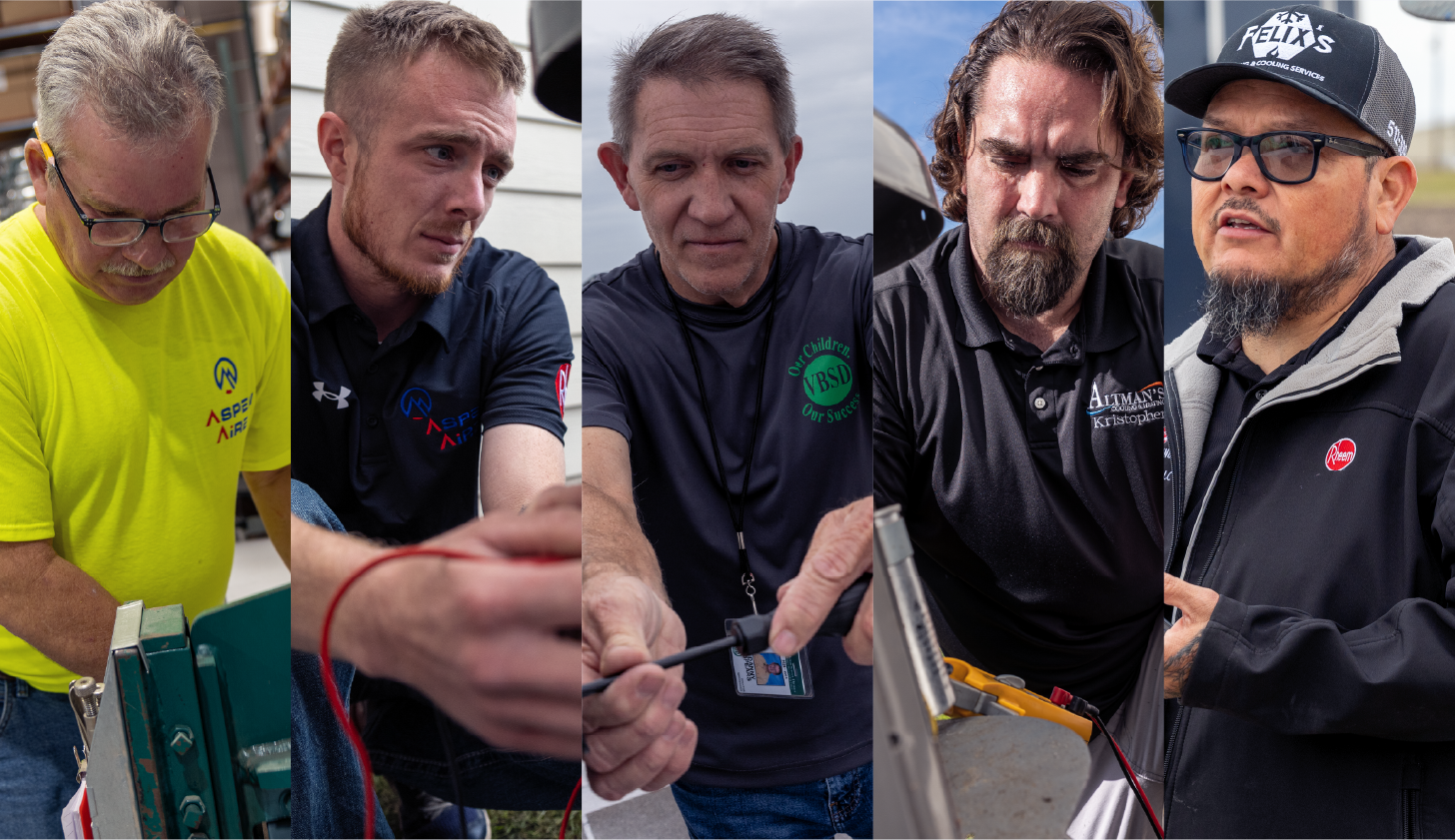Can I Install a Heat Pump Water Heater Myself?
October 2, 2025
Installing a heat pump water heater can be a great way to reduce energy costs and boost efficiency in your home. If you’re comfortable doing projects, handling a do-it-yourself water heater installation might be appealing. Let’s take a clear look at what’s involved, from the skills and tools you’ll need to the step-by-step process and potential risks. Whether you’re looking to replace your water heater or install a new one, this guide can help you decide if it’s a personal project or one for the pros.
What’s Required to Safely Install a Heat Pump Water Heater Yourself?
Before you attempt to install a heat pump water heater on your own, it’s important to understand the basic requirements involved. A successful DIY project is done safely, legally, and up to code.
Plumbing Know-How: Getting started requires basic plumbing skills like replacing water supply lines, installing shutoff valves, and attaching a temperature and pressure (T&P) relief valve. You’ll also need to set up a condensate drain line, which is a critical part of most heat pump systems. Beyond plumbing, proper airflow calculations are required for the installation space, at least 700 cubic feet for a 240V ProTerra unit, and 1,200 cubic feet for a plug-in 120V model. For customers on the West Coast, adding seismic strapping is also recommended for safety.
Electrical Knowledge: If your new water heater runs on 120V or 240V, you’ll need a firm understanding of electrical wiring. This means safely working with breakers, following the wiring diagram in the manual, and possibly installing GFCI protection depending on your local code. Running a new breaker from your electrical panel (especially for 240V units) may require a licensed electrician, depending on your panel’s capacity and your level of comfort working with electrical systems.
Understanding Permits and Local Codes: In most municipalities, replacing or installing a hot water heater requires a permit. Even if you know how to do the work, it still needs to pass an inspection. Ignoring this step can lead to fines, problems during home sales, or even denied insurance claims.
Essential Tools Checklist
You’ll want to have these ready:
- Pipe wrench
- Pipe cutter
- Voltmeter
- Screwdrivers
- Wire nuts
- Drain pan
- Pipe insulation
- Tubing for the condensate line
- Proper torch (acetylene or MAPP gas), flux, and pipe cleaning/deburring tools (if sweating copper)
- Press fitting tool (if using press fittings)
- PEX crimping tool (if using PEX)
And of course, always wear safety gear when working with electricity or pressurized plumbing.
Follow the Manufacturer’s Instructions: Every water heater is a little different, so having your exact model’s manual is best practice.
Helpful source: Rheem’s installation manual offers an outline of exactly how to install your heat pump water heater correctly, so you can stay compliant with both building codes and the product’s warranty terms. See Rheem Installation Manual
What Are the Steps and Risks of DIY Heat Pump Water Heater Installation?
Now that you know what’s involved, we’ll break down the process into manageable steps, highlighting both the workflow and the biggest risks to be aware of.
Step 1: Remove the Old Unit and Prep the Area
First, turn off the circuit breaker and shut off the water supply. Drain your old water heater completely and disconnect it safely.
Make sure the new location has the proper air volume and clearance for a heat pump water heater. These units need a certain amount of ambient air to operate efficiently, generally around 750 to 1,000 cubic feet of space. This part of the process is also where water heater mounting and placement become key.
Step 2: Set Up the New Heat Pump Water Heater
Carefully move the new unit into place, ensuring it sits level on the floor or a water-resistant platform. Connect the hot and cold water lines using flex hoses or PEX. Be sure to install the T&P relief valve and route the condensate drain to an appropriate outlet. Never let it drip onto the floor. Proper insulation and secure hot water heater connections will go a long way toward long-term efficiency and leak prevention.
Step 3: Electrical Work
Wiring should follow your model’s manual exactly. Use the appropriate gauge wire and double-check grounding. If your setup requires a GFCI breaker, now’s the time to install it. Incorrect wiring is one of the biggest risks in any DIY project, as faulty connections can cause fire hazards or even void the warranty on your water heater.
Step 4: Startup and Inspection
Once everything is connected, begin by filling the tank with water and opening a hot water tap to bleed any air from the lines. Next, inspect all joints and valves carefully to ensure there are no leaks. After confirming everything is sealed properly, restore power at the breaker and allow the unit to power up. Finally, if your local jurisdiction requires it (as many do), schedule a final inspection to complete your permit process.
Key Risks of DIY Installation
- Electrical hazards: Wiring mistakes can lead to injury or fire.
- Plumbing leaks: Improperly sealed connections can cause long-term water damage.
- Code violations: Failing to get a permit can result in fines or the need to redo the work.
- Warranty voiding: Many warranties, especially for Rheem products, require certified installation and permitting to stay valid.
When Should You Hire a Pro Instead of DIY?
In some cases, bringing in a water heater installation contractor can save you time, money, and headaches down the road. Here’s when you should probably skip the DIY:
You Need Electrical Panel Upgrades: If your current electrical panel doesn’t have room for a new 240V circuit, or it doesn’t meet modern safety codes, you’ll need a licensed electrician. Upgrading panels is complex and can’t legally be done without a permit.
There Are Major Plumbing Changes: Are you moving your unit to a new location? Swapping gas for electric? Hiring a plumber for water heater installation is the safer, smarter route when the situation calls for complex rerouting, pressure testing, and code compliance.
You’re Not Comfortable with DIY: If you don’t feel confident handling electrical work, pipe fitting, or installing code-compliant components like expansion tanks or pressure regulators, it’s better to let a certified technician take the reins.
Warranty and Rebate Requirements: Some rebates from utilities or local governments require a licensed contractor to do the installation. This is true for Rheem’s full product warranty, as water heater installs won’t qualify for coverage unless they’re done by a pro and specific documentation is provided.
If any of these apply to your project, it’s worth contacting a certified professional through the Rheem Pro Locator to ensure the job is done safely and up to code.
DIY Heat Pump Water Heater FAQ
Is DIY Installation Allowed Everywhere?
In many areas, local codes restrict or prohibit homeowners from installing water heaters themselves. Some areas require licensed plumbers or electricians for the work, and inspections are mandatory to ensure safety and compliance. Before attempting a DIY installation, always research your local codes and permitting requirements.
Is DIY heat pump water heater installation legal?
Yes, in most places. However, you’re still required to get a permit and pass an inspection. Skipping this step is considered a code violation.
How much money can I save doing it myself?
You could save around $500-$1,000 by avoiding labor costs. Just be sure to weigh that against the risk of errors or warranty issues.
Do I need a professional to connect to 240V?
If you’re not experienced with electrical work, yes. Working with a 240V circuit involves high-voltage risks and should be left to a pro.
Can I still qualify for rebates if I install it myself?
Some rebates require professional installation and inspection reports. Check with your local utility company or Rheem’s Rebate Center.
People Also Ask
Which Rheem heat pump water heater is easiest for DIYers to install?
Look into the Rheem ProTerra Hybrid Electric Water Heater series. Some models are designed with easier installation in mind and come with detailed manuals and videos.
Where can I watch a walkthrough of the installation process?
Rheem’s YouTube channel and product pages feature a series of step-by-step heat pump water heater installation videos, which are great for visual learners.
Where can I go if I want more information before starting a DIY install?
For more guidance, explore the Rheem water heating blog for detailed articles, how-to guides, and videos that cover everything from product selection to installation best practices.
Is DIY Heat Pump Water Heater Installation the Right Move for You?
Choosing to install a heat pump water heater yourself can be a smart way to save money if you have the experience and your home’s infrastructure is up to the task. If you choose to go DIY, make sure you understand local code and permit requirements, follow the manufacturer’s instructions exactly, and be comfortable working with both plumbing and electrical systems.
If you’re unsure or your installation requires major upgrades, hiring a licensed pro ensures you stay safe, compliant, and covered under warranty. You can also explore certified contractors in your area through Rheem’s Pro Locator tool.







